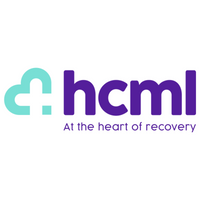The communication conundrum – is tech best?
For HR directors, effective communication is the linchpin of benefits uptake. But in an increasingly remote and hybrid workforce, how can organisations cut through the noise? The answer often lies in technology, but it is not the silver bullet.
For HR professionals, the world of employee communications can be over-crowded, and it is therefore important that communication around benefits is inter-linked with internal communication plans, leadership buy-in, alongside ensuring that employees are considered in terms of what will engage them.
Signposting the benefits
The first step to driving engagement is making employees aware of the benefits on offer. Research shows that even when organisations provide generous health and wellbeing packages, uptake remains low if staff aren’t aware of what’s available or how to access it.
Clear, consistent, and accessible communication is critical. Employees need to be able to see what’s available to them through multiple touchpoints such as email, intranet portals, and apps. They also need guidance on how to access services, book appointments, or use benefits effectively, ensuring they can take action quickly and easily.
Equally important is helping employees understand the impact that engaging with these services can have on their health, wellbeing, and overall work-life balance.
Communication alone, however, is not enough. HR teams must also address workplace culture. Employees are far more likely to engage with wellbeing initiatives if it is made clear that using them is normal, encouraged, and free from stigma or judgement.
This is especially true for mental health support, flexible working arrangements, or counselling services, where a perceived stigma can prevent uptake.
The role technology in communications
With many organisations now offering a remote or hybrid workforce, traditional methods of communication such as team meetings, noticeboards, or HR drop-ins aren’t always effective enough to reach the masses. Technology can help bridge that gap, offering flexible, accessible, and discreet ways for employees to engage with benefits.
Centralised intranets and HR platforms allow staff to view what is on offer, download resources, and book services at any time, acting as a one-stop-shop for wellbeing initiatives and reducing confusion. Apps and chatbots provide instant access to information, reminders, and FAQs, increasing visibility and engagement.
Being able to offer remote therapy and digital wellbeing services enable employees to access mental health support without the need to travel or make face-to-face appointments help to overcome barriers such as geographical location and busy work schedules.
Technology makes benefits easier and allows employees to use them at their own pace. This autonomy can significantly boost engagement, particularly for services such as counselling and mental health support.
Having digital platforms on offer is not enough in itself, organisations need to consider how they will communicate benefits to their employees. Segmented messaging that is tailored to different employee groups based on role, location, or interests ensures communications are relevant and more likely to resonate.
Regular email updates, app notifications, or internal channels keep benefits front-of-mind without overwhelming employees. Timely reminders, aligned with seasonal or life-stage considerations such as mental health awareness weeks or flu season, can further boost engagement.
Technology that can facilitate interactive content such as short videos, webinars, or infographics makes benefits easier to understand and more engaging. Demonstrating how services work, showing real-life scenarios, or providing simple tutorials encourages employees to take the next step.
Sharing testimonials from colleagues who have successfully used benefits can normalise uptake and demonstrate tangible outcomes.
With any form of technology, it is always important to test accessibility for all employee groups before implementation.
Leadership culture
Even the most sophisticated communication platform can fall flat without a supportive leadership culture. Creating an environment where employees feel safe and encouraged to access benefits is essential.
Leadership buy-in plays a key role; when managers and executives are actively seen to use and promote benefits, it’s a positive signal to the workforce that it’s okay to use the initiatives. Incorporating wellbeing into regular performance discussions or check-ins also reinforces engagement.
Measuring success
To understand whether communication around benefits is effective, HR teams should measure both engagement and outcomes. Establishing an as-is take up to then measure the effectiveness is key.
Tracking uptake of services, such as counselling sessions booked or health screenings completed, gives organisations a clear picture of engagement levels. Collecting employee feedback on benefits communication, alongside measuring improvements in productivity, retention, and overall engagement scores, provides further insight.
This data allows HR leaders to refine communication strategies, ensuring benefits are not only useful and accessible but also actively used. Measuring take-up at a macro-level isn’t sufficient as it used to be, it is important to know whether particular benefits are being accessed by the various demographics/areas.
Effective benefits communication is about creating awareness, fostering a positive culture, and removing barriers to access. Technology offers HR teams a way to reach more employees, personalise messages, and facilitate engagement with services.
By combining tech-led communication with a culture that champions wellbeing, organisations can significantly increase uptake of benefits, enhance employee engagement, and ultimately build a healthier, happier, and more loyal workforce.
The communication conundrum is not solved by technology alone, but when used strategically, it empowers employees to make the most of the benefits available to them, creating a win-win for both people and business.
Supplied by REBA Associate Member, HCML
HCML is a health and wellbeing provider, offering integrated and personalised healthcare solutions.








